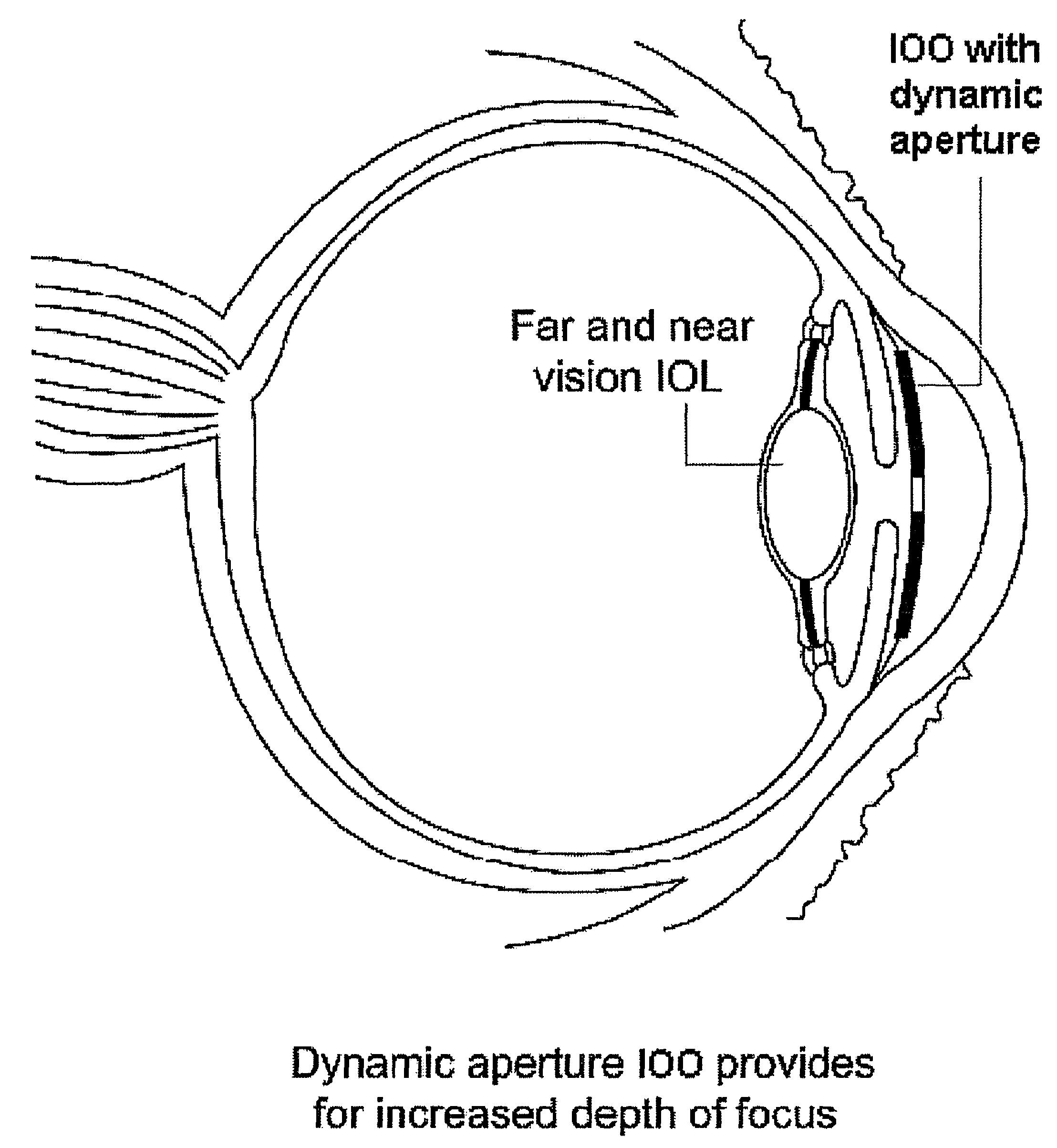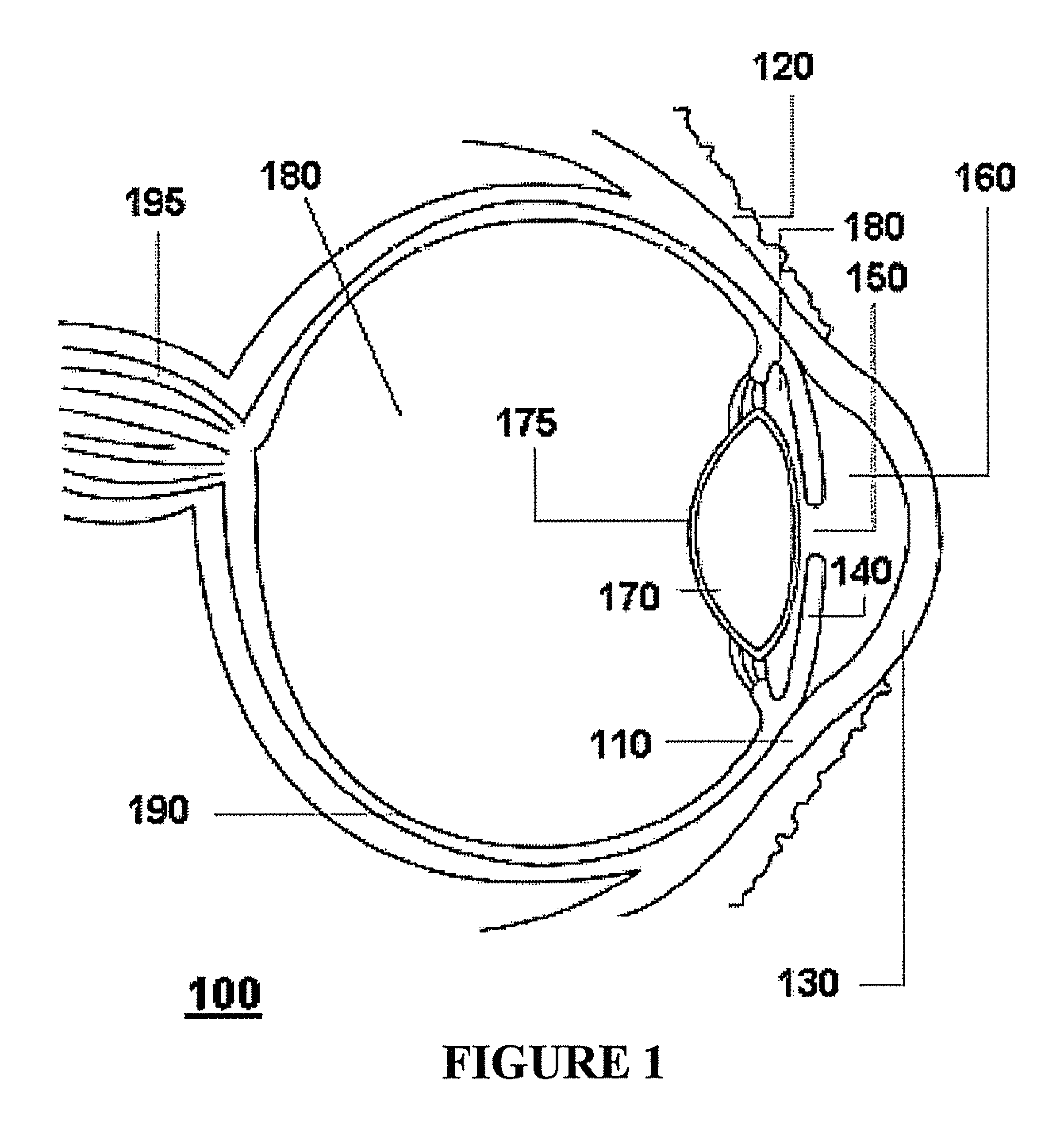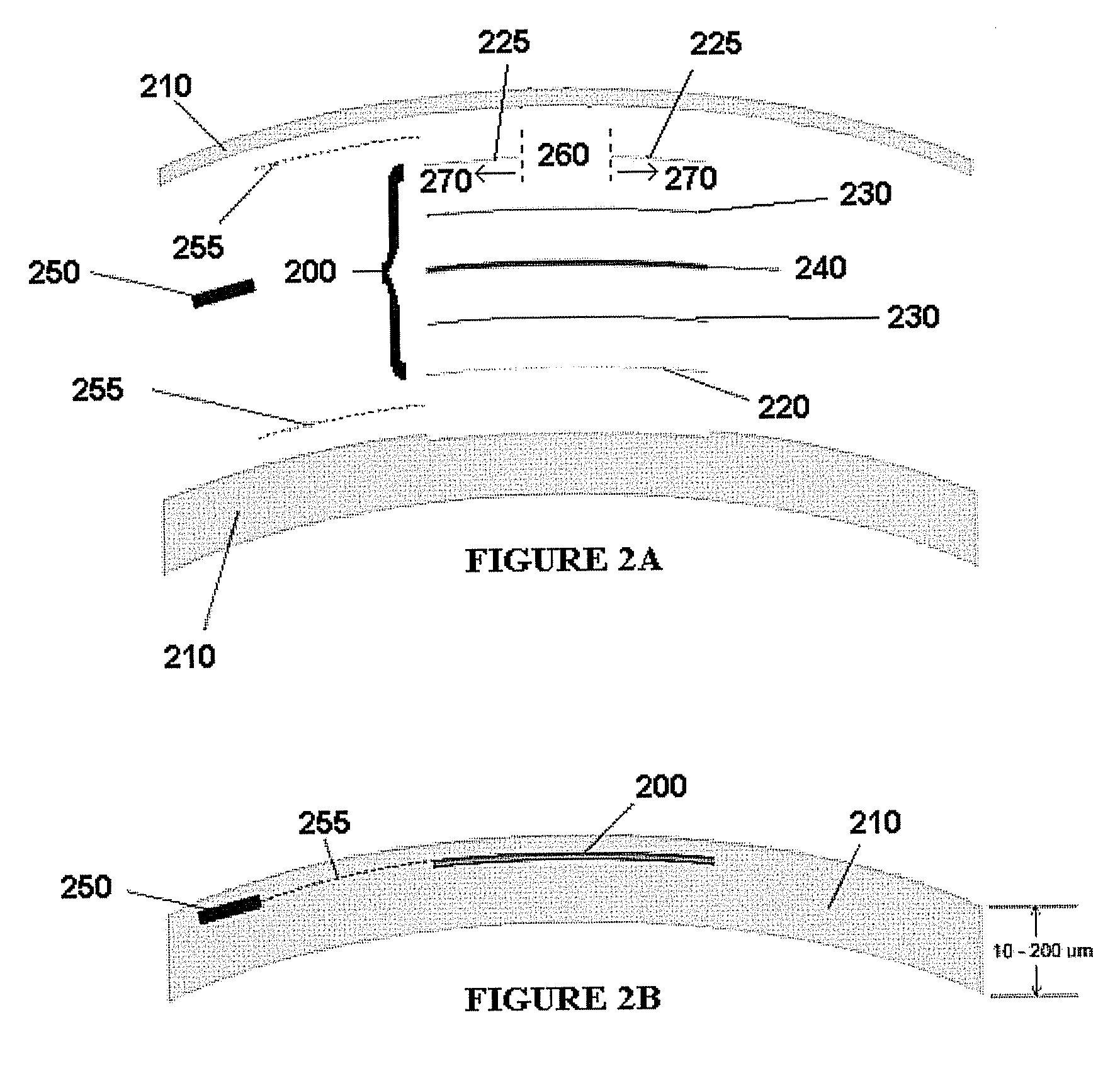Ophthalmic dynamic aperture
a dynamic aperture and ophthalmology technology, applied in the field of intraocular lenses, can solve the problems of inability to focus on either inability to focus on near or intermediate distance objects, etc., and achieve the effect of increasing field, increasing depth of field, and increasing depth of field
- Summary
- Abstract
- Description
- Claims
- Application Information
AI Technical Summary
Benefits of technology
Problems solved by technology
Method used
Image
Examples
Embodiment Construction
[0048]An electro-active element is a device with an optical property that is alterable with the application of electrical energy. The alterable optical property may be, for example, optical power, focal length, diffraction efficiency, depth of field, transmittance, tinting, opacity, or a combination of the above. An electro-active element may be constructed from two substrates. An electro-active material may be disposed between the two substrates. The substrates may be shaped and sized to ensure that the electro-active material is contained within the substrates and cannot leak out. One or more electrodes may be disposed on each surface of the substrates that is in contact with the electro-active material. The electro-active element may include a power supply operably connected to a controller. The controller may be operably connected to the electrodes by way of electrical connections to apply one or more voltages to each of the electrodes. When electrical energy is applied to the e...
PUM
 Login to View More
Login to View More Abstract
Description
Claims
Application Information
 Login to View More
Login to View More - R&D
- Intellectual Property
- Life Sciences
- Materials
- Tech Scout
- Unparalleled Data Quality
- Higher Quality Content
- 60% Fewer Hallucinations
Browse by: Latest US Patents, China's latest patents, Technical Efficacy Thesaurus, Application Domain, Technology Topic, Popular Technical Reports.
© 2025 PatSnap. All rights reserved.Legal|Privacy policy|Modern Slavery Act Transparency Statement|Sitemap|About US| Contact US: help@patsnap.com



